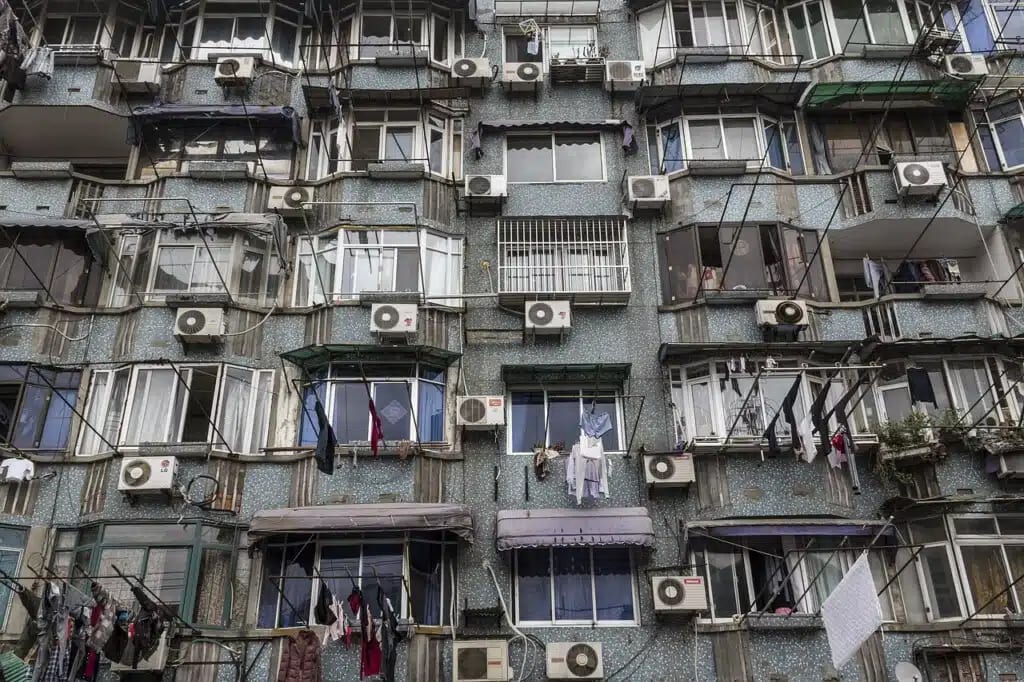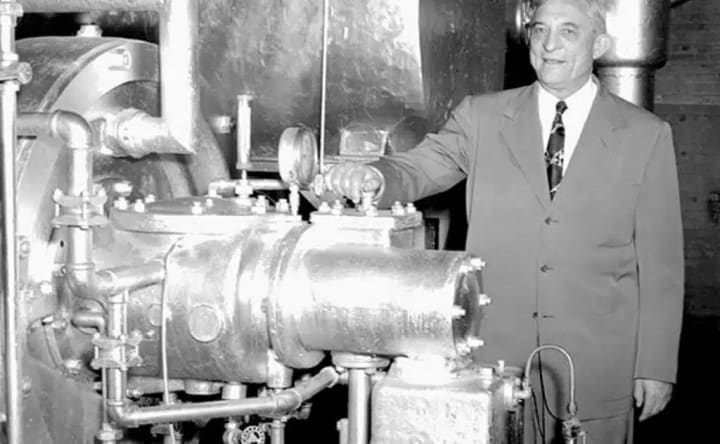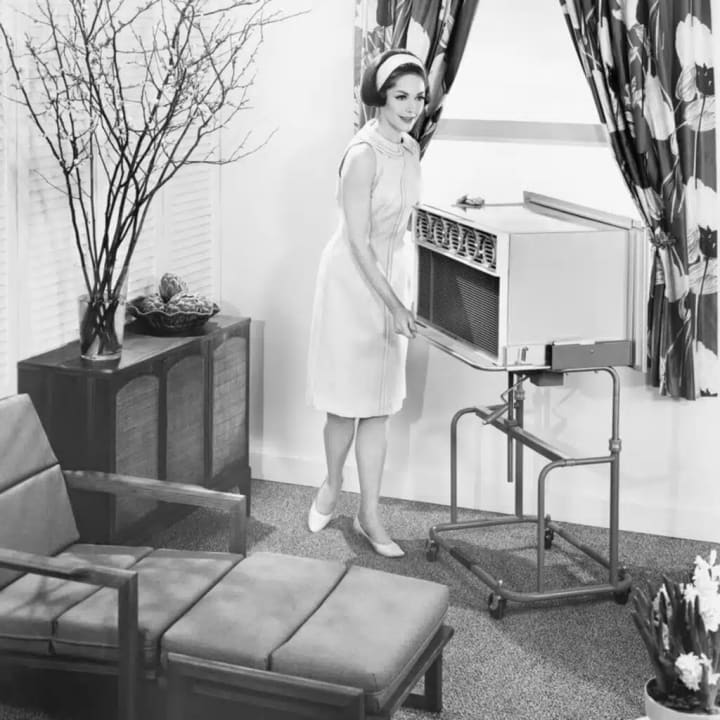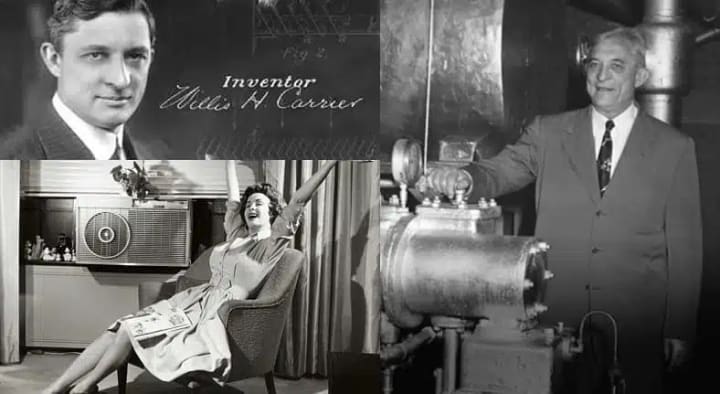Who invented air conditioning?
On July 17 1902, the first air conditioning system in the United States was built.

But it could be said that the first sketches of this system were already born in ancient Egypt and China.
It was on that day that the American engineer Willis Haviland Carrier introduced the first modern air conditioning system . The one he developed was a voluminous device full of devices that managed the passage of "refrigerant" gases from the liquid state to the aeriform state, an action that led to a drop in their temperature and, consequently, to cooling the surrounding environment and dehumidifying it. . The basic idea at that time was to find a system that would remove excess humidity from the environment and cool down the hot temperatures.
From there, different inventions that fulfilled these functions arose, although initially few people could afford it because they were very high prices, and huge devices that were not suitable to be in a home. In fact, initially they were not thought of as objects to be able to have at home, something that we will see below while we take a tour of the different authors and inventions on devices that could be considered air conditioners of yesteryear.
Willis Haviland Carrier
Do you know where the first machine to use this cooling system was used for the first time? Well, nothing more, nothing less than in a Brooklyn printer to protect the paper from sudden changes in humidity.
The father of air conditioning, or as it should be better called “ air conditioning ”, is the American engineer Willis Haviland Carrier. In 1901, at the age of 25, having just finished his mechanical engineering studies, Carrier devised a machine to reduce the humidity and temperature of the air. The system, patented in 1906, was based on the principle theorized by the English chemist and physicist Michael Faraday who, approximately a century earlier, had discovered how the compression and subsequent expansion of a gas resulted in the cooling of the gas itself.
It all starts with the first fans of Ancient Egypt…
The history of air conditioning begins in the ancient world, when to keep houses cool, they tried to make the most of air currents, placing windows and holes in the walls in the right place. Various solutions were added to these solutions: in Egypt, for example, it was customary to hang wet reeds on the windows, so that the water, evaporating, would cool the air. Also in the land of the pharaohs the first fans, made with palm leaves, saw the light of day, and then they also spread in Greece (from the 5th century BC) and from there in the Roman world. It cannot be said that in the past they did not manage with what they could to improve the quality of life...
Even so, the first fan does not come from Egypt but from China
Instead, it was in China where the first fan prototype was born, conceived in the 2nd century AD by the inventor Ding Huan and consisting of a fan driven by seven wheels, to be rotated manually. The system was perfected in medieval times, using the driving force of water (as in a mill), while in modern times the British scientist John Theophilus Desaguliers in 1734 made a bedside fan similar to a hair dryer. The machine, designed to prevent the accumulation of stale air, consisted of a metal wheel inserted vertically into a wooden structure provided with a "spout", from where air was sucked in and out.
A great leap for humanity: we went from steam to electricity
An important new development occurred in 1849 with the Scottish engineer William Brunton , who, using the power of steam, designed a "super fan" (with a radius of about twenty feet) that was soon used to improve air conditions in mines and hospitals. The next step was electric power: in 1882, the American engineer Schuyler Wheeler filed a patent for the first electric fan (designed first with two and then with six blades) and also manufactured in a "ceiling" version.
Willis Carrier, inventor of air conditioning
Then, with the turn of the 20th century, the first real air conditioner made its debut on the scene, created by Willis Carrier and arguably thanks to earlier inventions. Among these, a refrigeration device, the progenitor of the refrigerator, conceived in 1756 by the Scottish doctor William Cullen and based on the principle that a liquid, when it evaporates, removes heat from the environment with which it is in contact, lowering its temperature.

Term: «Air Treatment Apparatus»
Proceeding from a similar reasoning, Carrier introduced his air conditioner in 1902, electrically powered and renamed "Air Treatment Apparatus" . An apparatus that guaranteed the cooling of the air taking advantage of the expansion of the refrigerant gases, transported in a hydraulic circuit (equipped with compressors and fans) in which they passed several times from the liquid to the gaseous state. A process that involved two units connected to each other: an "external" one, where the gas flowed in a liquid state, and an "internal", where gas returned.
Term: "Air Conditioning"
Patented in 1906, the year in which the term "air conditioning" began to spread, the Carrier system underwent numerous improvements, especially useful for obtaining an exact temperature in a given environment. The new air conditioners, therefore, began to be used in industry, as well as in theaters, cinemas and some offices, although for a long time they remained cumbersome and dangerous. The gases used, from ammonia to chloromethane, were in fact toxic and an accidental leak could be fatal. For this reason, in 1931 they were replaced by new chemical compounds known by the trade name of "freon", harmless to humans, but not to the environment, particularly atmospheric ozone, so much so that today they are largely prohibited. measure (in favor of gas with less environmental impact).
Now yes, we already have air conditioning at home, cars or on the train

Also in 1931 it was developed in the USA, by engineers HH Schultz and JQ Sherman,a "domestic" air conditioner, to be placed on window sills. Then air conditioning was included in automobiles (the first company to believe in the business was the American Packard in 1939) as well as other means of transportation. Over the decades, air conditioners have become increasingly efficient, safe, compact (in 1945 American Robert Sherman even created a "portable" model) and inexpensive, establishing themselves as a permanent presence in many homes and in almost all indoor public spaces. Let's remember that before, prices were so high that not everyone could afford to have air conditioning.
3r miles…
And in the third millennium these devices, thanks to increasingly sophisticated technologies (and also capable of generating heat), became "smart", being able to be operated through smartphones. They can be turned on at the most appropriate times, limiting electricity consumption, and can even be programmed to turn on or off at certain times of the day or if they reach a temperature range "x" (which we indicate ourselves). In addition, the latest generation refrigerant gases, such as R32, are in no way harmful to the ozone layer that protects the planet, so much so that they are defined as "ecological".

What printer was the first to try it?
As we have mentioned before, the first to test this refrigeration system for newspapers was a printing company in the United States. Let's see which one exactly... the first air conditioner was installed on July 17, 1902 in a printing shop in Brooklyn, New York, where constant changes in humidity made it difficult to properly treat paper and inks. Applications quickly spread to the textile industry, then to offices (to increase employee performance), and finally, after World War II, to homes and automobiles.
We went from gases that are harmful to humans to gases that are harmful to the environment, and now what?
The gases used in early air conditioners, chloromethane and ammonia, were highly toxic and accidental compressor failure could be fatal. It was not until 1928 that these gases were replaced by chlorofluorocarbons, derived from methane and known under the sole name of freon, which have excellent refrigerant properties and are harmless to humans; unfortunately, however, they are very damaging to atmospheric ozone.
Luckily, as we have mentioned before, gases of this type are no longer used in today's air conditioners, but it should be remembered that there were times in which specific "well-being" of the human being was looked at without taking into account their health at long-term or by accident, or the environment. It does not mean that today we are doing much better, because there is still a long way to go, but we have been improving on something.
In any case, thanks to these advances, today we can enjoy other advances, improving what we already had and enjoying inventions that improve our day to day for the benefit of both human beings and the environment, if not, if not harmful.
About the Creator
Míriam Guasch
Hello, I'm Miriam! Enthusiastic pharmacist passionate about well-being, vegan food, nature, animal lover, avid traveler, ecologist. Excited to learn and share!






Comments
There are no comments for this story
Be the first to respond and start the conversation.